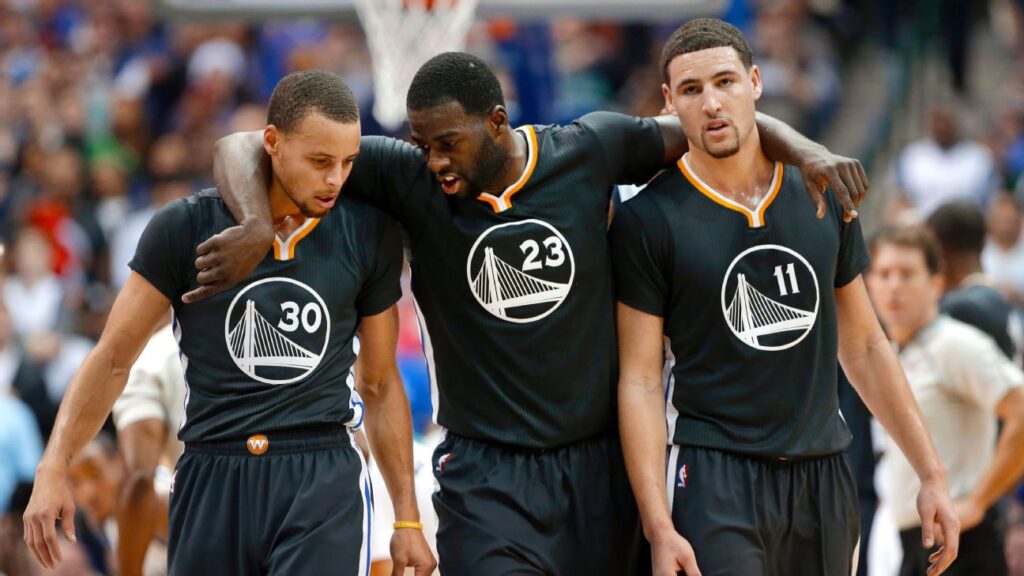
The NBA has undergone significant changes over the past decade, with emerging trends transforming the way the game is played. One of the most notable trends in recent years has been the rise of small-ball and positionless basketball, as teams adapt to a faster-paced, more offensively-oriented style of play.
This article will explore the evolution of this trend, its impact on team strategies and player development, and its influence on the overall landscape of the NBA.
Origins of Small-Ball
Small-ball basketball can be traced back to the early 2000s, with the “Seven Seconds or Less” Phoenix Suns under head coach Mike D’Antoni leading the way. The Suns prioritized speed, spacing, and ball movement, relying on smaller, more versatile lineups to outpace and outscore opponents. The success of this approach paved the way for other teams to adopt similar strategies, leading to the rise of small-ball in the NBA.
The Golden State Warriors and the Small-Ball Revolution
The Golden State Warriors’ dynasty, led by Stephen Curry, Klay Thompson, and Draymond Green, has played a significant role in popularizing small-ball and positionless basketball. Under head coach Steve Kerr, the Warriors frequently utilized a “Death Lineup” featuring Green at the center, allowing for increased floor spacing, ball movement, and shooting. This small-ball approach helped the Warriors win three NBA championships in four years (2015, 2017, and 2018), solidifying its status as a dominant strategy in the league.
The Evolution of Player Archetypes
As small-ball and positionless basketball have become more famous, traditional player roles and archetypes have evolved. Big men, once primarily responsible for interior defense and rebounding, are now expected to possess a more diverse skill set, including perimeter shooting, ball handling, and playmaking abilities. This shift has given rise to the “stretch four” or “stretch five,” big men who can space the floor and shoot from beyond the arc.
The Emergence of Positionless Players
In today’s NBA, players who can seamlessly transition between multiple positions are highly sought after, as they provide their teams with increased lineup flexibility and matchup advantages. These “positionless” players, such as LeBron James, Giannis Antetokounmpo, and Ben Simmons, can handle the ball, create scoring opportunities, and defend multiple positions on the court.
The Impact on Team Strategies
Small-ball and positionless basketball have forced teams to adapt their strategies on both ends of the court. Offensively, teams are prioritizing floor spacing, ball movement, and three-point shooting to exploit mismatches and create open scoring opportunities. Defensively, teams are switching more frequently on pick-and-rolls and utilizing smaller, more agile lineups to better defend the perimeter and contest three-point shots.
The Influence on Player Development
The rise of small-ball and positionless basketball has also had a significant impact on player development at all levels of the sport. Youth and college basketball programs are increasingly emphasizing skill development over traditional position-based roles, encouraging players to develop a versatile skill set that will allow them to excel in a small-ball, positionless system. This shift in player development is likely to continue shaping the future of the NBA, as more versatile and skilled players enter the league.
The Future of Small-Ball and Positionless Basketball
As teams continue to adapt to the changing landscape of the NBA, it is likely that small-ball and positionless basketball will remain prominent trends in the league. However, as with any trend, it is possible that new strategies and counter-strategies will emerge, potentially leading to a shift in the way the game is played. For now, though, the emphasis on speed, versatility, and shooting has undoubtedly changed the face of the NBA, and teams will continue to innovate and adapt in pursuit of a competitive edge.
Impact on Fan Experience and Engagement
The rise of small-ball and positionless basketball has also had a significant impact on the fan experience. The faster pace of play, increased scoring, and dazzling displays of athleticism have made NBA games more exciting and entertaining, drawing in new fans and increasing overall engagement. The emphasis on three-point shooting and highlight-reel plays has also led to the emergence of new fan-favorite players, such as Stephen Curry and Damian Lillard, who have captured the imagination of fans with their remarkable shooting abilities and clutch performances.
The Role of Analytics in the NBA
The increased utilization of analytics has played a crucial role in the rise of small-ball and positionless basketball. Advanced statistics, such as Player Efficiency Rating (PER), Win Shares, and Real Plus-Minus (RPM), have helped teams and coaches better understand the value of floor spacing, three-point shooting, and versatile lineups. As a result, organizations are increasingly using data-driven insights to inform their roster construction, player development, and game strategy.
Sports Betting and the NBA
The rise of small-ball and positionless basketball has had some interesting implications for sports betting as well. Bettors need to consider the impact of these trends when placing their wagers on today’s NBA odds, as traditional statistics and player roles may not always provide an accurate picture of a team’s potential performance. It is essential for bettors to stay informed about the latest NBA trends and adjust their strategies accordingly to increase their chances of success.
Conclusion
The NBA has undergone a significant transformation in recent years, with the rise of small-ball and positionless basketball playing a major role in shaping the league’s current landscape. This trend has influenced team strategies, player development, and the overall fan experience, making the game faster-paced, more versatile, and more exciting to watch. As the NBA continues to evolve, it will be fascinating to see how small-ball and positionless basketball continue to shape the future of the sport, and what new trends might emerge in response to this ongoing revolution.

















